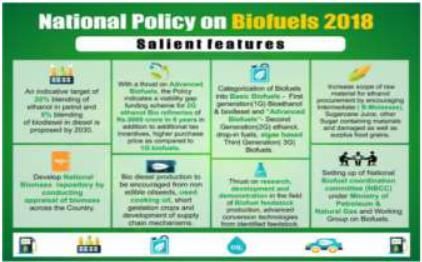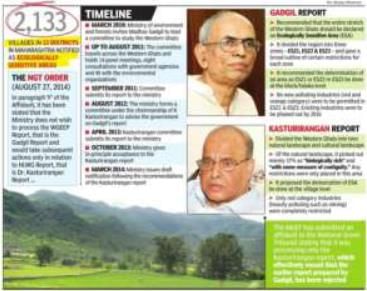Organization /Bodies/ NGOs - UPSC MCQ
7 Questions MCQ Test Additional Study Material for UPSC - Organization /Bodies/ NGOs
How is the National Green Tribunal (NGT) different from the Central Pollution Control Board (CPCB)?
1) The NGT has been established by an Act whereas the CPCB has been created by an executive order of the Government.
2) The NGT provides environmental justice and helps reduce the burden of litigation in the higher courts whereas the CPCB promotes cleanliness of streams and wells, and aims to improve the quality of air in the country.
Which of the statements given above is/are correct?
1) The NGT has been established by an Act whereas the CPCB has been created by an executive order of the Government.
2) The NGT provides environmental justice and helps reduce the burden of litigation in the higher courts whereas the CPCB promotes cleanliness of streams and wells, and aims to improve the quality of air in the country.
Which of the statements given above is/are correct?
Which one of the following Union Ministries is implementing the Biodiesel Mission (as Nodal Ministry)?
| 1 Crore+ students have signed up on EduRev. Have you? Download the App |
How does National Biodiversity Authority (NBA) help in protecting the Indian agriculture?
1) NBA checks the biopiracy and protects the indigenous and traditional genetic resources.
2) NBA directly monitors and supervises the scientific research on genetic modification of crop plants.
3) Applicati0on for Intellectual Property Rights related to genetic/biological resources cannot be made without the approval of NBA.
Which of the statements given above is/are correct?
1) NBA checks the biopiracy and protects the indigenous and traditional genetic resources.
2) NBA directly monitors and supervises the scientific research on genetic modification of crop plants.
3) Applicati0on for Intellectual Property Rights related to genetic/biological resources cannot be made without the approval of NBA.
Which of the statements given above is/are correct?
With reference to Bombay Natural History Society (BNHS), consider the following statements:
1) It is an autonomous organization under the Ministry of Environment and Forests.
2) It strives to conserve nature through action-based research, education and public awareness.
3) It organizes and conducts nature trails and camps for the general public.
Which of the statements given above is/are correct?
‘Gadgil Committee Report’ and ‘Kasturirangan Committee Report’, sometimes seen in the news, are related to
Which of the following are the key features of ‘National Ganga River Basin Authority’ (NGRBA)?
1) River basin is the unit of planning and management.
2) It spearheads the river conservation efforts at the national level.
3) One of the Chief Ministers of the States through which the Ganga flows becomes the Chairman of NGRBA on rotation basis.
Select the correct answer using the code given below.
Consider the following statements:
1) Animal Welfare Board of India is established under the Environment (Protection) Act, 1986.
2) National Tiger Conservation Authority is a statutory body.
3) National Ganga River Basin Authority is chaired by the Prime Minister.
Which of the statements given above is / are correct?
|
20 videos|561 docs|160 tests
|
|
20 videos|561 docs|160 tests
|



















